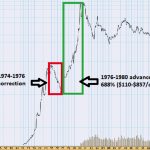In the last Q&A Yellen did, she mentioned that the FOMC members didn’t want to consider the unwinding of the Fed’s balance sheet to be a part of the hawkish policy of rate hikes because the Fed had no experience with unwinding its balance sheet. She said communicating policy on the unwind of the balance sheet to the market would be tough because of this lack of experience. The Fed proved her correct in its Minutes on Wednesday because it bungled its explanation of how and when it would unwind the $4.5 trillion balance sheet. This caused the S&P 500 to fall by about 1% from the peak in the afternoon to the close. The next Fed meeting is in early May, so the FOMC members should clarify the Fed’s position on the balance sheet in interviews with the media. If it doesn’t clarify what its policy is, it could spark a further sell off in equities.
The most confusing part of the unwind is the speed of it. To clarify, when the bonds it has purchased mature, the Fed reinvests the money into new ones. When the Fed discusses an unwind, it isn’t discussing selling the bonds; it is discussing slowing or stopping the reinvestment into new bonds. Technically, even stopping the purchases abruptly would be a slow unwind because the bonds have varying maturities. The Fed mentioned at one point in the Minutes that it preferred to do a gradual slowing of the purchases which is what the market was expecting. It’s logical for the market to expect a gradual pace given the slow speed the Fed has raised rates at.
However, in the Minutes, the Fed also discussed ending the repurchases all at once because it would be easier to communicate to the marketplace and because it would shrink the balance sheet quicker. Shrinking the purchases at a gradual speed wouldn’t necessarily be tough to communicate, but if the Fed plans to alter the speed of the reductions according to the economic data, it will be tough. The Fed plans to provide details to the market on the speed of the purchases well in advance of when they occur. The Fed likely can’t simultaneously provide lead time for its unwind and be data dependent. Whether it can do so depends on the specifics of how much lead time is provided. If the lead time is a month, the data can change between when the plan is announced and when it is executed. If the lead time is one week, then the data wouldn’t be updated in between when the plan is announced and when it is executed. Traders will be front running these decisions in both cases.













Leave A Comment